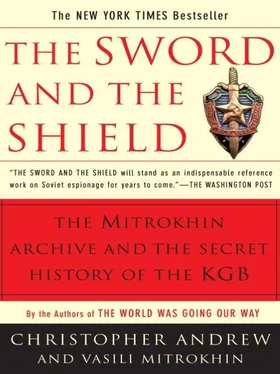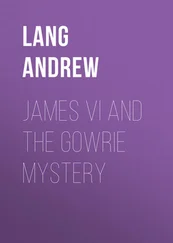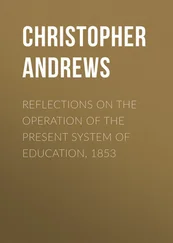In December 1996 the German weekly Focus reported that, according to “reliable sources,” SIS had also provided the BfV, the German security service, with the names of several hundred German politicians, businessmen, lawyers and police officers who had been involved with the KGB. On this occasion the SIS source was identified as a Russian defector who had had extensive access to the KGB archives. A later article in Focus reported:
The Federal Prosecutor has been examining numerous detailed new leads to a hitherto undiscovered agent network of the former Soviet secret service, the KGB, in Germany. The researchers in Karlsruhe are primarily concentrating on Moscow sources who were taken on by the successors to the KGB and have probably been reactivated since the end of the Cold War.
The basis for the research is extensive information on agents which a Russian defector smuggled into London from the Moscow secret service. After intensive analysis, the British secret service passed all information on KGB connections in Germany to the BfV in Cologne in early 1996. 40
In July 1997 another leak from Mitrokhin’s archive occurred in Austria. Press reports quoted a KGB document giving directions for locating a secret arms dump of mines, explosives and detonators, codenamed GROT, hidden in a dead letter-box near Salzburg in 1963, which had been intended for use in sabotage operations:
Leave the town of Salzburg by the Schallmoser Haupstrasse leading to Highway No. 158. At a distance of 8 km from the town limit, in the direction of Bad Ischl-Graz, there is a large stone bridge across a narrow valley. Before reaching this bridge, leave the federal highway by turning right on to a local road which follows the valley in the direction of Ebenau; then go on 200 meters to the end of the metal parapet, which stands on the left-hand side of the road. On reaching the end of the parapet, turn left at once and follow a village road leading in the opposite direction. The DLB is located about 50 meters (60 paces) from the turn-off point leading from the main road on to the village road… 41
Though the Austrian press did not mention it, the document came from Mitrokhin’s archive, which also revealed that in 1964 road repair works had covered the entrance to the DLB, raised the ground level, and changed the layout of the surrounding area. The KGB had decided not to try to recover and relocate the GROT arms dump. Attempts by the Austrian authorities to find the dump in 1997 also failed. 42Mitrokhin’s notes reveal that similar KGB arms and radio caches, some of them booby-trapped, are scattered around much of Europe and North America. 43
The press leak which came closest to revealing the existence of Mitrokhin’s archive was a further article in the German weekly Focus, in June 1998. Focus reported that a colonel in the FCD registry with access to “all the files on Moscow’s agents” had smuggled handwritten copies of them out of KGB headquarters to his dacha near Moscow. In 1992 he had defected to Britain and, according to Focus, SIS agents had brought the “explosive” notes hidden in the dacha back to London. 44Four years later, in an operation codenamed WEEKEND, SIS had allegedly briefed the BfV on the German material in the archive. According to Focus, “The defector has presented the BfV with hundreds of leads to Moscow’s spy network in the Federal Republic of Germany.” A “high-ranking BfV official” was said to have commented, “We were quite shocked at how much [the defector] knew. Moscow clearly possesses tons of blackmail material.” The BfV was reported to have received new leads on fifty espionage cases and to have begun twelve new investigations. 45
The Focus article, however, inspired widespread skepticism—partly because the story of a top secret KGB archive exfiltrated from a Russian dacha seemed inherently improbable, partly because the only detailed example given by Focus of the intelligence it contained was the sensational allegation that the former Chancellor, Willy Brandt, “the icon of Germany’s Social Democrats,” had been a Soviet spy during the Second World War. The Brandt story was instantly dismissed as “completely absurd” by Yuri Kobaladze, head of the SVR press bureau. When asked why in this instance the SVR was abandoning its usual practice of not commenting on individuals alleged to be Russian spies, Kobaladze replied:
It would naturally be very flattering to have such a high-ranking politician on our list of credits, but in the interests of preserving historical truth we felt it necessary to reject this fiction, which could be misused for political purposes.
Kobaladze also dismissed the story of the secret archive in a KGB colonel’s dacha as a myth. The source of the Brandt story, he insisted, could only be a former KGB major in the Oslo residency, Mikhail Butkov, who had defected to Britain in 1991. 46
Though wrong about the secret archive, Kobaladze was right to reject the allegation that Brandt had been a Soviet spy. Mitrokhin’s notes reveal that the KGB archives do indeed contain a file on Brandt (codenamed POLYARNIK), which shows that while in Stockholm during the Second World War he passed on information to the NKVD residency. But, as the file makes clear, Brandt was also in touch with British and American intelligence officers—as well as with the Norwegian former secretary of Leon Trotsky, regarded by the NKVD as the greatest traitor in Soviet history. 47Brandt’s overriding motive was to provide any information to all three members of the wartime Grand Alliance which might hasten the defeat of Adolf Hitler. In the case of the Soviet Union, he calculated—accurately—that his best channel of communication with Moscow was via the Stockholm residency. The real embarrassment in the POLYARNIK file concerns the role not of Brandt but of the KGB. In 1962, almost certainly with Khrushchev’s personal approval, the KGB embarked on an operation to blackmail Brandt by threatening to use the evidence of his wartime dealings with the Stockholm residency to “cause unpleasantness” unless he agreed to cooperate. The attempted blackmail failed. 48
LIKE THE BFV and Austrian counter intelligence, a number of other security services and intelligence agencies around the world from Scandinavia to Japan have been pursuing leads from Mitrokhin’s archive for several years—usually unnoticed by the media. Most of the leads have been used for counterintelligence purposes—to help resolve unsolved cases and neutralize SVR operations begun in the KGB era—rather than to mount prosecutions. There have, however, been a number of convictions which derive from Mitrokhin’s evidence.
On one occasion, Mitrokhin himself was almost called to give evidence in court. The case concerned Robert Lipka, an army clerk assigned in the mid-1960s to the National Security Agency (NSA, the US SIGINT service), whom Mitrokhin had identified as a KGB agent. 49In May 1993 FBI agent Dmitri Droujinsky contacted Lipka, posing as “Sergei Nikitin,” a GRU officer based in Washington. Lipka complained that he was still owed money for his espionage over a quarter of a century earlier, and was given a total of $10,000 by “Nikitin” over the next few months. He appeared confident that he could no longer be prosecuted. “The statute of limitations,” he told “Nikitin,” “has run out.” “Nikitin” corrected him: “In American law the statute of limitations for espionage never runs out.” Lipka replied that, whatever the legal position, he “would never admit to anything.” After a lengthy FBI investigation, Lipka was arrested in February 1996 at his home in Millersville, Pennsylvania, and charged with handing classified documents to the Soviet Union. 50
Since Lipka denied all charges against him, Mitrokhin expected to give evidence at his trial in the U.S. District Court, Philadelphia, in May 1997. But, in what the Philadelphia Inquirer termed “a surprising turnaround” in the courtroom, Lipka “exploded into tears as he confessed that he had handed over classified information to KGB agents.” Lipka had been persuaded by his lawyer, Ronald F. Kidd, to accept a prosecution offer of a plea bargain which would limit his sentence to eighteen years’ imprisonment with time off for good behavior, rather than continue to plead not guilty and face the prospect of spending the rest of his life in jail. Though Mitrokhin’s name was never mentioned in court, it was the evidence he had obtained from KGB files which seems to have prompted Lipka’s change of heart. “We saw how significant the evidence was,” his lawyer told reporters. “But the government also realized they couldn’t go through a full trial and not have the mystery witness exposed.” The “mystery witness” was Mitrokhin. After Lipka’s confession, U.S. Assistant Attorney Barbara J. Cohan admitted, “We had a very sensitive witness who, if he had had to testify, would have had to testify behind a screen and under an assumed name, and now we don’t have to surface him at all.” 51“I feel like Rip Van Spy,” said Lipka when he was sentenced in September 1997. “I thought I had put this to bed many years ago and I never dreamed it would turn out like this.” As well as being sentenced to eighteen years’ imprisonment and fined 10,000 dollars, Lipka was ordered to repay the further 10,000 dollars from FBI funds given him by “Nikitin.” 52
Читать дальше











